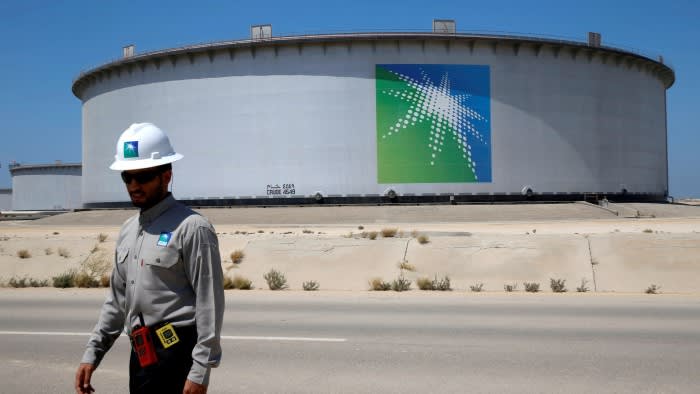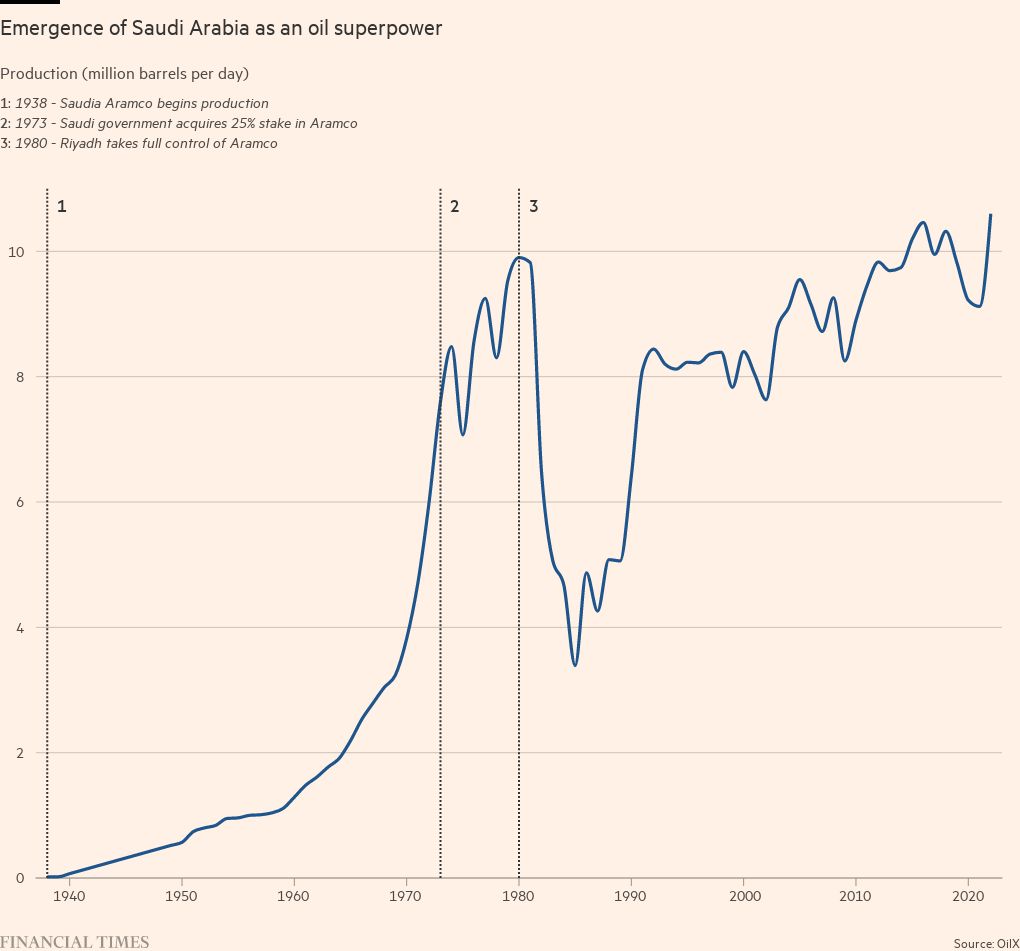Saudi Arabia has dropped a plan to expand the kingdom’s daily oil production capacity, in a major policy reversal by the world’s largest oil exporter.
State-run Saudi Aramco said on Tuesday that it had been asked by the energy ministry to abandon a plan to increase its maximum sustainable production capacity from 12mn barrels a day to 13mn b/d by 2027.
The multibillion-dollar investment programme had set the company apart from much of the industry, where spending on oil production is generally falling because of concerns about climate targets and future demand. Saudi Aramco accounts for about 10 per cent of the 100mn barrels of oil the world consumes every day.
The decision was taken by the ministry of energy and was not driven by any technical or operational issue at the company, which remains in a position to restart the investment programme if requested, according to a person familiar with the matter.
The ministry of energy has not issued a statement or provided any explanation for the move, which is a significant policy shift for the kingdom. Saudi Aramco chief executive Amin Nasser has spent the past two years advocating for more investment in oil production across the industry.
“The 100mn barrel system, because of lack of investment, is really fragile in terms of its ability to cope with any unforeseen interruptions,” Nasser told the FT in 2022.
But in the past 18 months, Saudi Arabia has repeatedly cut production as part of Opec’s efforts to support prices amid slowing demand growth and increased output from the US and other producers. As a result, Saudi Aramco is currently producing about 9mn b/d, down from an average of 10.2mn b/d in the first three months of 2022.
That means the company already has 3mn b/d of spare capacity that it could bring online to meet any sudden rise in demand, reducing the immediate need to increase its maximum output further, said the person familiar with the decision.
Saudi Arabia expects to free up a further 1mn b/d of oil for export by displacing liquid fuels used in the kingdom for power generation with gas, the person added.
Amrita Sen, head of research at Energy Aspects, said the decision should be interpreted as a response to the existing spare capacity in the system rather than a change in Saudi Arabia’s long-term confidence in oil demand.
“The decision is absolutely not about what they think of demand,” said Sen. “They have 3mn b/d of spare capacity now so what is the rush of increasing production capacity to 13mn b/d.”
Sen added that supply chain inflation across the industry had increased the costs associated with its investment programme and that Saudi Aramco had not ruled out reviving the expansion plan at a later date. “Why undertake an expansion at a time when costs are high?” she said. “And they haven’t said they will cancel this indefinitely.”
The International Energy Agency, the west’s energy watchdog, this month forecast the world would generate a “substantial surplus” of oil in 2024 as demand growth slowed and production from non-Opec countries, including the US, Brazil and Guyana, increased.
Alastair Syme, an analyst at Citigroup, said the decision underlined the challenge facing Opec and its allies, which have lost market share by cutting production, but failed to trigger a significant rally in crude prices.
Despite the cuts, tensions in the Middle East and the war in Ukraine, Brent was trading at about $80 a barrel on Tuesday, in line with prices in January 2022 before Russia’s invasion of Ukraine in February 2022.
Saudi Arabia’s decision “appears to be a huge rethink of strategy and will have wide ramifications to Aramco capital spending, the Gulf supply chain and of course OPEC+ oil policy”, said Syme.

